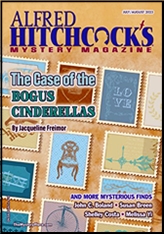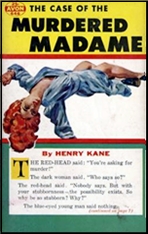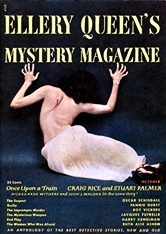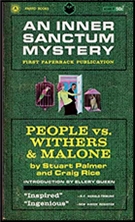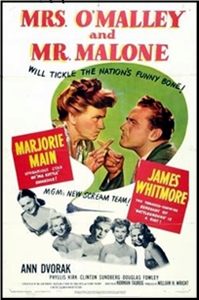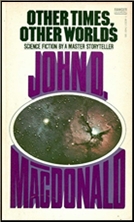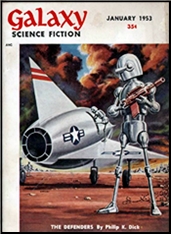Sat 16 Sep 2023
Archived PI Stories I’ve Read: CARROLL JOHN DALY “Corpse & Co.”
Posted by Steve under Pulp Fiction , Stories I'm Reading[15] Comments
CARROLL JOHN DALY “Corpse & Co.” Novelette. Race Williams. First published in Dime Detective Magazine, February 1936. Added later (see comments #7 and #13): Collected in The Adventures of Race Williams (Mysterious Press, trade paperback, 1989), and in Just Another Stiff, The Collected Hard-Boiled Stories of Race Williams, Volume 5 (Steeger Books, 2019).
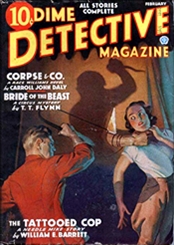
INTRO: This pulp fiction PI review has been excerpted from a column I did for the April/May/June, 1979 issue of The Not So Private Eye, a fanzine published by Andy Jaysnovitch for several years in the late 70s. In this particular column, titled “Speaking of Pulp,” I dissected, if you will, the complete February issue of Dime Detective Magazine. It was a long column, so I’ve decided to break it up and post it here story by story.
And so with no further ado, here’s what I had to say about story Number One:
—
The lead novel is a Race Williams yarn, written by a name you should recognize. The story is entitled “Corpse & Co.”, and it’s written of course by Carroll John Daly. It’s called a novel on the contents page out of courtesy only, for it runs only 33 pages long. Still, in terms of actual wordage, my calculator works that out to be the equivalent of 70 to 75 pages of today’s average hardcover novel. So call it a third of a novel.
And it reads that way as well. Maybe I have bad luck whenever I pick up a pulp to read a Daly story in it. His stories, whether a Race Williams adventure like this one, a Satan Hall yarn, or whatever, they always seem as though they were installments of unannounced serials. What I mean is I get the idea that a series of connected Daly stories would follow in consecutive issues of a given magazine, each supposedly complete in themselves, but always seeming to begin in the middle of a plot, and never winding up the loose ends completely. I’ve never taken the time to check this out, and so perhaps I stand to be corrected.
Anyway, the focus of all the action this time around is a previous case in which the bodies that Williams so happily provided in the final scene were conveniently disposed of by one Gentle Jim Corrigan. To avoid bringing in the feds, and to save Mary Morse’s business and reputation, Williams agreed to this course of action. Of course that leave Miss Morse open to a bit of blackmail, and that’s this story. Since her jewelry business is still floundering, Race refuses her case at first (no dough in it), until he’s forced to take it when the blackmailer gets the bright idea that Williams will make a handy target for tommy-gun practice and is better off dead just on general principles.
As a prime example of the supreme self-appointed vigilante, Race Williams was probably the founder of that particular school of tough private eyes. Mike Hammer turned out to be a more than willing student of his a number of years later, with the principal difference being that Hammer has never yet turned a willing dame down. Florence Drummond, alias The Flame, says to Williams, “Brains are something you haven’t got.” Mary Morse is in love with him, and he treats it as a minor complication.
Dirty Harry, of movie fame, is another who shoots first, in the name of the law, and worries about the law,only afterwards. But while Race Williams lives by his guns, and that’s the extent of the story. Not much is said about constitutional law and the rights of criminals here. Here’s the last line: “When better corpses are made, Race Williams will make them.”


